Monetary Policy Report - October 2020
Loading...
Monetary Policy Report - October 2020
Date published
2021-02-02
Date
Authors
Office of the Deputy Technical Governor
Vargas-Herrera, Hernando
Office for Monetary Policy and Economic Information
Ospina-Tejeiro, Juan Jose
Programming and Inflation Department
Huertas-Campos, Carlos Alfonso
Inflation Section
Cobo-Serna, Adolfo León
Caicedo-García, Edgar
Martínez-Cortés, Nicolás
Rojas, Carlos Daniel
Pulido, Karen
Macroeconomic Programming Section
Garavito-Acosta, Aarón Levi
Calderón, Luis Hernán
González, Camilo
Salazar-Diaz, Andrea
Advisors and Associate Researcher with the Programming and Inflation Department
Gaitán-Maldonado, Celina
Restrepo-Ángel, Sergio
Macroeconomic Modeling Department
Hamann-Salcedo, Franz
Macroeconomic Modeling Department
Pérez-Amaya, Julián Mauricio
Romero-Chamorro, José Vicente
Forero, Santiago
Moreno, Nicolás
De Castro, Marcela
Naranjo, Sara
Consultant and Researchers associated with the Macro-Economic Models Department
Guarín-López, Alexander
Vargas-Herrera, Hernando
Office for Monetary Policy and Economic Information
Ospina-Tejeiro, Juan Jose
Programming and Inflation Department
Huertas-Campos, Carlos Alfonso
Inflation Section
Cobo-Serna, Adolfo León
Caicedo-García, Edgar
Martínez-Cortés, Nicolás
Rojas, Carlos Daniel
Pulido, Karen
Macroeconomic Programming Section
Garavito-Acosta, Aarón Levi
Calderón, Luis Hernán
González, Camilo
Salazar-Diaz, Andrea
Advisors and Associate Researcher with the Programming and Inflation Department
Gaitán-Maldonado, Celina
Restrepo-Ángel, Sergio
Macroeconomic Modeling Department
Hamann-Salcedo, Franz
Macroeconomic Modeling Department
Pérez-Amaya, Julián Mauricio
Romero-Chamorro, José Vicente
Forero, Santiago
Moreno, Nicolás
De Castro, Marcela
Naranjo, Sara
Consultant and Researchers associated with the Macro-Economic Models Department
Guarín-López, Alexander
Part of book title
ISSN
ISBN
Document language
eng
Metrics

downloads: 0
abstract_views: 0
Las opiniones contenidas en el presente documento son responsabilidad exclusiva de los autores y no comprometen al Banco de la República ni a su Junta Directiva.
The opinions contained in this document are the sole responsibility of the author and do not commit Banco de la República or its Board of Directors.
Abstract
Recent data suggest that the technical staff’s appraisals of the condition and development of economic activity, inflation and the labor market have been in line with current trends, marked by a decline in demand and the persistence of ample excess productive capacity. A significant projected fall in output materialized in the second quarter, contributing to a decline in inflation below the 3% target and reflected in a significant deterioration of the labor market. A slow recovery in output and employment is expected to continue for the remainder of 2020 and into next year, alongside growing inflation that should remain below the target.
The Colombian economy is likely to undergo a significant recession in 2020 (GDP contraction of 7.6%), though this may be less severe than projected in the previous report (-8.5%). Output is expected to have begun a slow recovery in the second half of this year, though it is not projected to return to pre-pandemic levels in 2021 amid significant global uncertainty. The output decline in the first half of 2020 was less severe than anticipated, thanks to an upward revision in first-quarter GDP and a smaller contraction in the second quarter (-15.5%) than had been projected (-16.5%). Available economic indicators suggest an annual decline in GDP in the third quarter of around 9%. No significant acceleration of COVID-19 cases that would imply a tightening of social distancing measures is presumed for the remainder of this year or in 2021. In that context, a gradual opening of the economy would be expected to continue, with supply in sectors that have been most affected by the pandemic recovering slowly as restrictions on economic activity continue to be relaxed. On the spending side, an improvement in consumer confidence, suppressed demand for goods and services, low interest rates, and higher expected levels of foreign demand should contribute to a recovery in output. A low base of comparison would also help explain the expected increase in GDP in 2021. Based on the conditions laid out above, economic growth in 2020 is expected to be between -9% and -6.5%, with a central value of -7.6%. Growth in 2021 is projected to be between 3% and 7%, with a central value of 4.6% (Graph 1.1). Upward revisions compared to the July report take into account a lower-than-expected fall in first-semester growth and a somewhat faster recovery in the third quarter in some sectors. The forecast intervals for 2020 and 2021 growth tightened somewhat but continue to reflect a high degree of uncertainty over theevolution of the pandemic, the easures required to deal with it, and their effects on global and domestic economic activity.
Box 1. Evaluation of the Predictive Capacity of Expected Inflation Measures. Authors: César Anzola-Bravo, Anderson Grajales-Olarte, Alexander Guarín-López, Julián Camilo Mateus-Gamboa, Jonathan Alexander Muñoz-Martínez, Carlos Andrés Quicazán-Moreno, Juan Sebastián Rojas-Moreno, Cristhian Hernando Ruiz-Cardozo
Box 2. Literature Review: Weighing the Drivers of Portfolio Flows to Emerging Market Economies. Authors: Andrés Sánchez-Jabba
Box 1. Evaluation of the Predictive Capacity of Expected Inflation Measures. Authors: César Anzola-Bravo, Anderson Grajales-Olarte, Alexander Guarín-López, Julián Camilo Mateus-Gamboa, Jonathan Alexander Muñoz-Martínez, Carlos Andrés Quicazán-Moreno, Juan Sebastián Rojas-Moreno, Cristhian Hernando Ruiz-Cardozo
Box 2. Literature Review: Weighing the Drivers of Portfolio Flows to Emerging Market Economies. Authors: Andrés Sánchez-Jabba
Description
JEL Codes
Temática
Keywords
Keywords
Citation
Seleccionar año de consulta:

Esta obra está bajo licencia internacional Creative Commons Reconocimiento-NoComercial 4.0.
Este documento ha sido depositado por parte de el(los) autor(es) bajo la siguiente constancia de depósito
 Comunidades y colecciones
Comunidades y colecciones Statistics
Statistics Analíticas Google
Analíticas Google Mapa Composición JEL
Mapa Composición JEL
